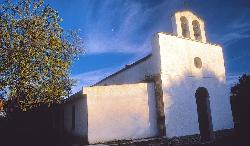Skip navigation bar and go to contents
Vivere la campagna
 Agricoltura
Agricoltura
 Ambiente
Ambiente
 Bilancio e Patrimonio
Bilancio e Patrimonio
 Consigliera di Parità
Consigliera di Parità
 Cultura
Cultura
 Formazione Professionale
Formazione Professionale
 Immigrazione/Emigrazione
Immigrazione/Emigrazione
 Innovazione Tecnologica
Innovazione Tecnologica
 Lavori pubblici e Viabilità
Lavori pubblici e Viabilità
 Lavoro
Lavoro
 Personale
Personale
 Pianificazione Territoriale
Pianificazione Territoriale
 Politiche giovanili
Politiche giovanili
 Politiche Sociali
Politiche Sociali
 Protezione civile
Protezione civile
 Pubblica Istruzione
Pubblica Istruzione
 Sport
Sport
 SUAP
SUAP
 Trasporti
Trasporti
 Turismo
Turismo
 URP
URP

At the heart of the old centre, three religious edifices look onto the main square of medieval plan. The parish church of Santa Barbara, the oldest of the village, built between the 12th and 14th century in Gothic-Aragonese style on a previous Romanesque plan, is structured around two aisles, with intercommunicating chapels, and a central nave with barrel vault. It guards some valuable pieces of furniture in polychrome marble: an inlaid altar of the 18th century, a baptismal font and a pulpit of 1871 and an 18th-century pipe organ, recently restored.
The church of the Souls of Purgatory, raised in the 17th C. in Spanish style, has got a single nave with barrel vault. The façade is adorned by a merlon and a small sail-shaped bell tower. Inside is a fine example of wooden altar of the 17th C.
The third and final religious building is the Oratory of Our Lady of the Rosary. Its first 17th-century plan, in Gothic-Catalan style, underwent several modifications and influences, with additions in Baroque style of the 18th century. The church hosts the Museum of Sacred Art and Furniture, guarding artefacts and furnishings belonged to the Brotherhood of the Rosary, as well as wooden statues and works of great artistic value in finely worked wrought-silver, whose creation dates back to the 16th-17th century in a few instances.
At a short distance from the inhabited centre are various rural churches, including that of San Sisinnio, whose first plan probably dates from the 11th-12th century; it was then modified in 1600 and restructured in 1922. The plan has got a single nave with barrel vault, surrounded on three sides by a 17th-century open arcade, consisting of a thatched roof supported by stone pillars and surmounted by capitals. Its interiors guard an ancient wooden pulpit of hexagonal shape, richly worked and adorned, with friezes and anthropomorphic symbols.
In the upper part of the village, immersed in a thick pinewood, the church of the Virgin of Carmelo dates back to the 17th century. The square in front of it offers a wonderful view over the valley and inhabited centre below.
The only evidence of the ancient, now disappeared village of Leni, a small farming borough that once rose along the sides of the homonymous river, is the church of San Pietro. Already existing in 1365, the edifice was restored in 1921 following a fire; the simple structure, sunk in the greenery, in proximity of the river, perfectly conveys the religious sense of this locality.
Another rural edifice is the church of San Giuseppe, built in 1744 by a Spanish lordling inside his property, as a sign of his devotion to the Saint. The small shrine appears as a little open arcade, supported by two columns in granite, extracted from the nearby mountain. The place is opened on Whit Sunday, on the occasion of a festival dedicated to the Saint.